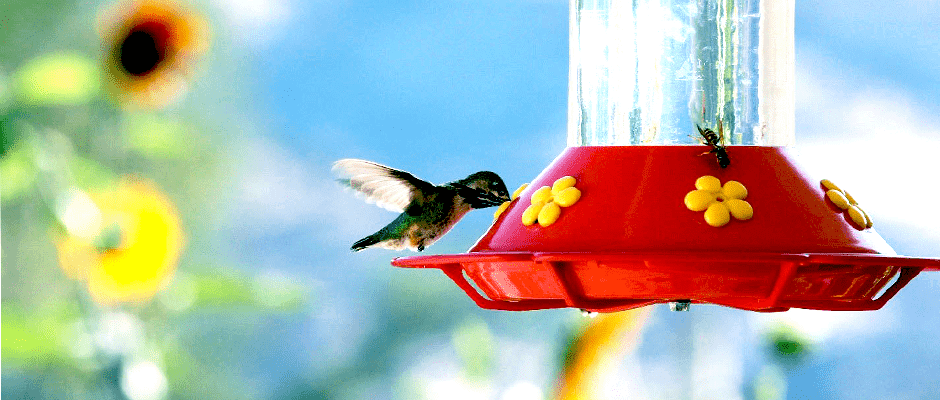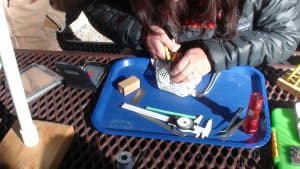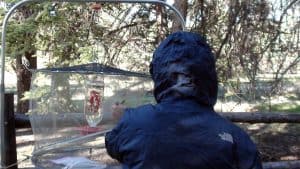Share this article
BLM partners monitor Utah hummingbirds
Since 2009, the Bureau of Land Management has been working with partners in southern Utah to take on a very big (and in some ways, very small) project.
The BLM, Dixie National Forest, Bryce Canyon National Park and the Hummingbird Monitoring Network have been banding and monitoring hummingbirds to determine strategies for conserving them and their habitat and provide a basis for future research.
Since the population status of many hummingbirds is unknown, the effort helps collect local and regional information that can be used on a larger scale.
For the BLM, conservation stewardship is an essential part of managing our nation’s public lands. This includes responsibly managing habitat for more than 3,000 species of wildlife — including hummingbirds — dispersed over some of the nation’s most ecologically diverse and unique ecosystems.
The Hummingbird Monitoring Network extends across several western states, Canada and Mexico, as well as Central and South America. Partners use monitoring stations to band and study local hummingbirds to gather baseline demographic and ecological data.
Every two weeks at three stations at the Escalante Interagency Visitor Center, wildlife biologists from the BLM, Forest Service and National Park Service spend five hours after sunrise banding hummingbirds; determining their sex, species and age; logging physical characteristics; checking females’ breeding status and noting whether the birds have been captured before. The data helps biologists determine migration patterns within different species, which species are present in the area and which stick around to breed. Hummingbirds banded at these stations have been recaptured in locations from the northern Oregon coast to Tucson, Arizona. Recaptured birds had been banded at sites from Vancouver, Washington to Mesquite, Nevada.
Five hummingbird species have been captured at sites in central and southern Utah, including two known to breed in the area.
Black-chinned hummingbirds are by far southern Utah’s most common hummingbird, usually nesting at lower elevations. Appearing in early April, when the desert holly blooms, the males arrive first and have been documented moving between banding sites during breeding season, which starts in early May. The first juveniles are captured from late June through the end of September, when hummingbirds typically leave.
Broad-tailed hummingbirds nest mostly in the mountains at banding sites in Bryce Canyon National Park and Boulder Mountain, although in rare cases they may breed at lower elevations. Breeding season starts in late May. Juveniles are captured from late June through the rest of the season.
Two other species migrate, though they arrive later in the summer. Rufous hummingbirds, the second most common species in the area, arrive about the first of July on their migration south, just as tall Indian paintbrush (Castilleja linariifolia) blossoms in the canyons. They usually arrive with lots of fat reserves from breeding locations in Canada and Alaska and are known to fight over nectar resources. The calliope, the least common of the four, arrives in August and September.
The fifth species, the Anna’s hummingbird, is a rare wanderer. Since 2009, only nine have been banded. Of the 5,806 birds captured, 3,670 were black-chinned hummingbirds, 1,369 were rufous, 669 were broad-tailed and 85 were calliope. A total of 1,246 have been recaptured.
Some have pollen on their bills, heads or throats when they are caught, which biologists collect and view under a microscope to determine the plant species and when the hummingbirds visit the flowers. Funnel-shaped flowers like penstemons and scarlet gilia, as well as desert holly and Indian paintbrush, often appear, offering clues about seed mixes for restoration that would benefit hummingbirds.
People are fascinated by hummingbirds. Banding stations can see up to 100 visitors a day. Since hummingbirds are only found in the Western Hemisphere, for some foreign visitors it’s their first chance to see these birds up close. Viewing or releasing a bird often puts a smile on their faces.
The Bureau of Land Management is a Premier Partner of The Wildlife Society.
Header Image: ©Terry Tolbert/BLM










